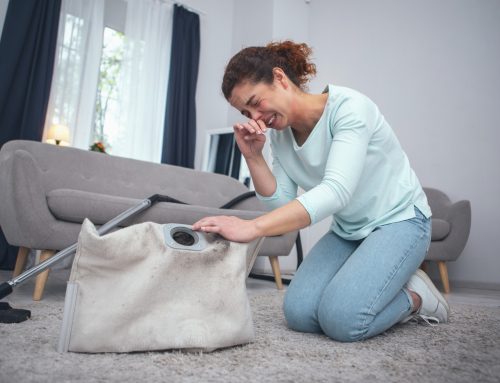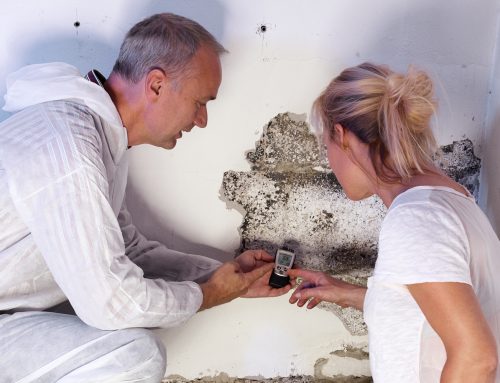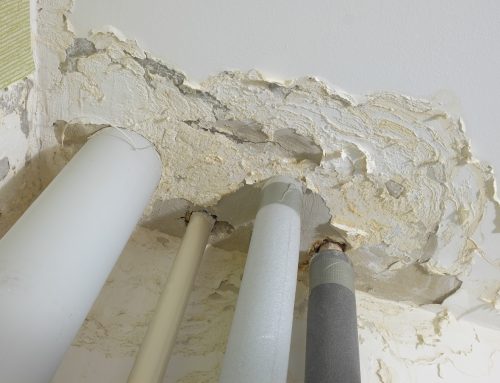Scientists have been debating whether certain types of mold really can make you sick for decades. While researchers continue to search for answers to that question, one thing is for sure: mold isn’t good for the health of your home.
Mold eats away at your interior, leaving unsightly spots around your home. Worse, mold can destroy the structure or foundation of your home, leading to more serious problems.
Wouldn’t it be nice to know how to identify mold in your home so you can get rid of it for good? We think so, too, which is why we created this guide.
Think that black spot on your ceiling might be mold? Then check out this guide to the nine most common types of mold in your home. Plus, stick around to find out how Pro Services can help.
1. Ulocladium
Ulocladium is often confused for black mold because of its dark, usually black, appearance. You’ll typically find this type of mold in humid rooms like bathrooms and basements.
More specifically, Ulocladium is commonly found after water damage or interior exposure to condensation. If you’ve recently had a pipe burst or a toilet leak, don’t be surprised to see a patch of blackish Ulocladium.
2. Trichoderma
If you’ve ever noticed a bright blue, wooly patch of growth around your home, odds are you’re dealing with Trichoderma. Trichoderma grows on porous materials when they get wet, for example:
- Fabric
- Wallpaper
- Air conditioning filters
A total of 89 different species make up Trichoderma mold genus but the ones found in your home are typically non-toxic. Still, if you see this type of mold in your house, it’s better to call an expert to exterminate it.
3. Stachybotrys
Stachybotrys is better known as black mold, and it may be the cause of idiopathic pulmonary hemorrhage in infants. Black mold can grow anywhere inside your home but it tends to prefer paper, fiberboard, and other materials with high cellulose content.
This type of mold is dark greenish-black in color, giving its infamous moniker. Usually only found in places that have been damp for weeks or months at a time, black mold also tends to be slimy to the touch.
4. Penicillium
Without penicillium mold, we couldn’t produce cheeses and penicillin antibiotics. Yet, this type of mold isn’t all good. Penicillium is also known to affect food, which can cause severe food poisoning in humans.
This type of mold tends to be bluish-green with an overall white cast. It has a velvet-like feel and, of course, prefers humid environments. People often report finding Penicillium growing on damp mattresses, wallpaper, and refrigerated food items.
5. Fusarium
Fusarium is another food-loving mold that is known for causing food poisoning. This type of mold looks like cotton candy, usually pink, white, or red with a filamented appearance.
Healthy soil is rich in non-toxic Fusarium, but the stuff that gets into your home via food can be harmful. Here are some foods that Fusarium tends to love:
- Barley
- Wheat
- Bananas
Fusarium is also known to infect daffodil bulbs, so look out for it if you plant these flowers indoors.
6. Chaetomium
Of all the types of mold on this list, Chaetomium is perhaps the most recognizable. That’s because this mold species lets off a musty odor when it’s fully grown.
Chaetomium starts off white or gray and turns dark black over time. Most homeowners don’t have problems with this mold unless there is severe water damage that has long gone untreated.
Be careful to avoid touching Chaetomium at all costs if you think it’s infecting your home. Nail and skin infections are common after touching this type of mold. Instead, take advantage of a mold remediation expert.
7. Aureobasidium
Aureobasidium is a mold genus comprising 14 different species that commonly infect urban homes. Unlike most of the molds on our list, this one prefers to live on wood than any other type of material.
If you see pink or brown spots that darken with age on your crown molding or wood floors, it’s likely Aureobasidium. Don’t try to DIY clean up this type of mold, though. Touching it can lead to severe infections of the eye if the spores are transferred.
8. Aspergillus
One of the most common types of mold found in US homes, Aspergillus tends to cluster on water-damaged walls. Aspergillus is recognizable by its long spores that gather in long lines rather than small groups.
This is another type of mold you don’t want to mess with. Breathing in Aspergillus spores with even the slightest immune system weakness can lead to a condition called Aspergillosis. Aspergillosis may cause:
- Allergic reactions
- Lung infection
- Other organ infections
Unfortunately, the Aspergillus genus contains more than 185 species of varying hues. To identify this type of mold in your home, you’ll need to call in an expert.
9. Alternaria
Alternaria is hands down the most common type of mold found in American homes. It’s also a highly allergenic mold, causing coughing, watery eyes, and sneezing in people who live with it.
You’ve probably seen this brown and dark-green mold growing in your shower after a major leak. Or maybe you’ve accidentally touched its velvety surface while feeling around in the bathtub after dark.
Despite being common, though, you don’t want Alternaria around long enough to cause you health problems. You also don’t want to risk breathing in spores when trying to remove it yourself. That’s why you need Pro Services.
Pro Services Can Help with Your DC-Area Mold Problem
These nine types of mold can cause serious damage to your home and you and your family’s health. You don’t have to live with it forever, though.
Are you searching for professionals to help you with your DC-area mold problem? Contact Pro Services today and get rid of your mold problem for good!



